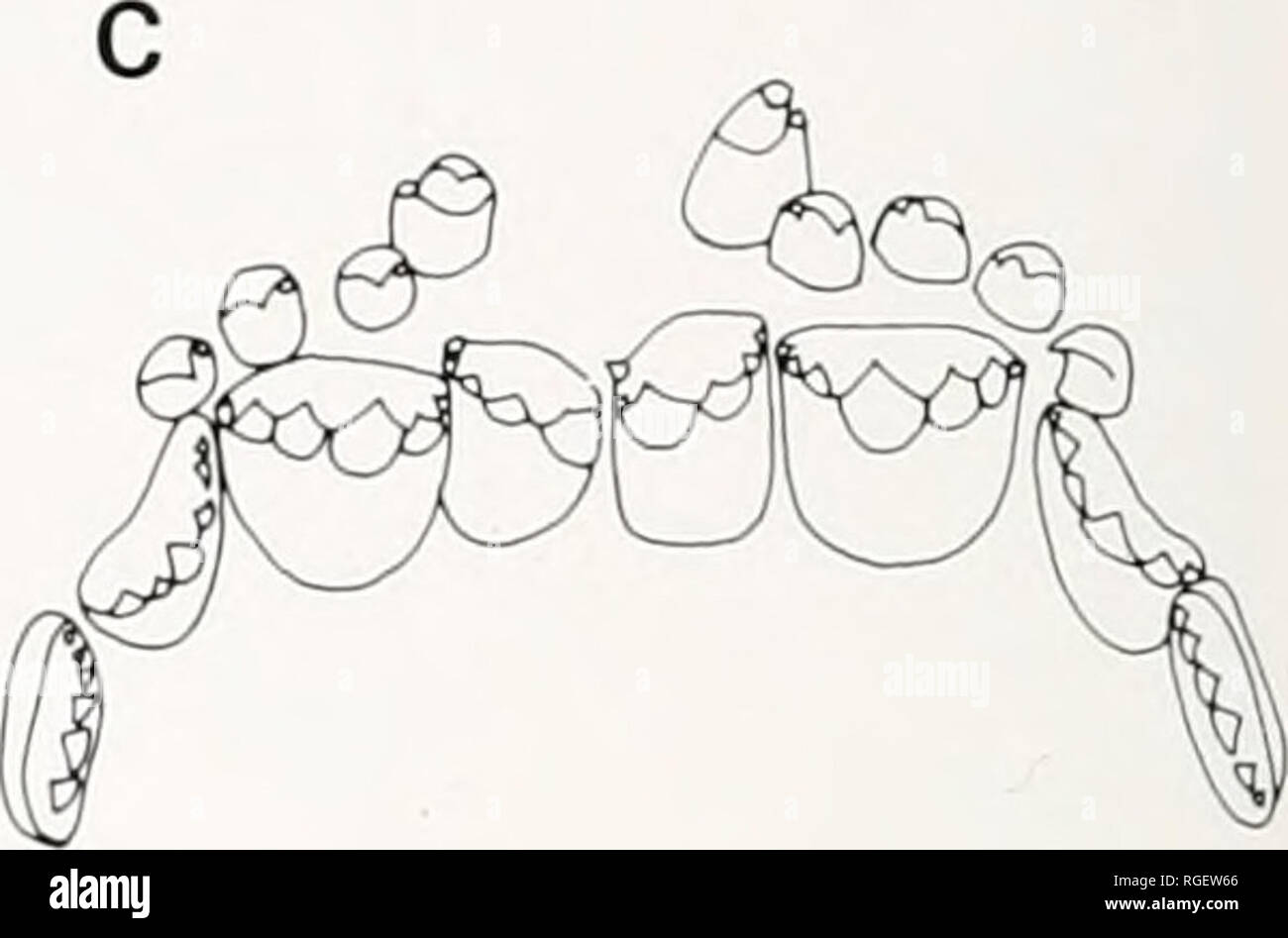. Bulletin of the Museum of Comparative Zoology at Harvard College. Zoology. , 1 mm , Figure 3. Bryconaethiops, premaxillary dentition: a. microstoma, 65 mm; b. boulengeri, 57 mm; c. yseuxi, 57 mm. of microstoma; Poll (1939), evidently with- out having examined the holotype, con- cluded that it must be a synonym of either microstoma or macrops. Labeo Cuvier 1817 Type species: Cyprinus niloticus Forskal 1775. Our rapids collections include 11 Labeo, more species than any other genus except Synodontis. One of them is new. Labeo lividus new species Plate 6, d Holotype. MCZ 50524, 180 mm, R &

Image details
Contributor:
Book Worm / Alamy Stock PhotoImage ID:
RGEW66File size:
7.1 MB (142.7 KB Compressed download)Releases:
Model - no | Property - noDo I need a release?Dimensions:
1946 x 1284 px | 33 x 21.7 cm | 13 x 8.6 inches | 150dpiMore information:
This image is a public domain image, which means either that copyright has expired in the image or the copyright holder has waived their copyright. Alamy charges you a fee for access to the high resolution copy of the image.
This image could have imperfections as it’s either historical or reportage.
. Bulletin of the Museum of Comparative Zoology at Harvard College. Zoology. , 1 mm , Figure 3. Bryconaethiops, premaxillary dentition: a. microstoma, 65 mm; b. boulengeri, 57 mm; c. yseuxi, 57 mm. of microstoma; Poll (1939), evidently with- out having examined the holotype, con- cluded that it must be a synonym of either microstoma or macrops. Labeo Cuvier 1817 Type species: Cyprinus niloticus Forskal 1775. Our rapids collections include 11 Labeo, more species than any other genus except Synodontis. One of them is new. Labeo lividus new species Plate 6, d Holotype. MCZ 50524, 180 mm, R & S 41. Pamtypes. MCZ 50525, 5: 74.1-239 mm, R & S 41; MCZ 50452, 4: 60.3-78.9 mm, R & S 38; MCZ 50232, 10: 57.5-87.9 mm, R & S 29; MCZ 50371, 1: 72.4 mm, R & S 28; MCZ 50287, 5: 53.1-89.1 mm, R & S 35. Diagnosis. A Labeo with two pairs of well-developed barbels; barbels dull- colored, of the same hue as the skin of the head where they arise; length of posterior barbel consistently slightly less than dia- meter of eye, and length of anterior barbel about one-third to one-half that of posterior barbel; keratinous tubercles on head small, granular, white spots which project little or not at all above surface of head; adults dull blue dorsally and laterally, whitish ventrally; 37-39 scales in a lateral series to end of hypural plate, 20-24 (usually 24) around caudal peduncle; dorsal fin with 10 or 11 (usually 11) branched rays, its margin falcate. Labeo lividus is apparently closely re- lated to L. barbatus, which differs from it in having barbels dark or black in color, anterior barbel frequently as long or longer than posterior barbel, both barbels usually longer than eye diameter; eye more nearly superolateral in position; tubercles on head more strongly developed; and adults with back and sides pale-colored or dirty white, with indistinct darker vertical marks on the scales. Lips. Rostral flap fimbriated. Inner surface of upper lip with numerous trans- verse